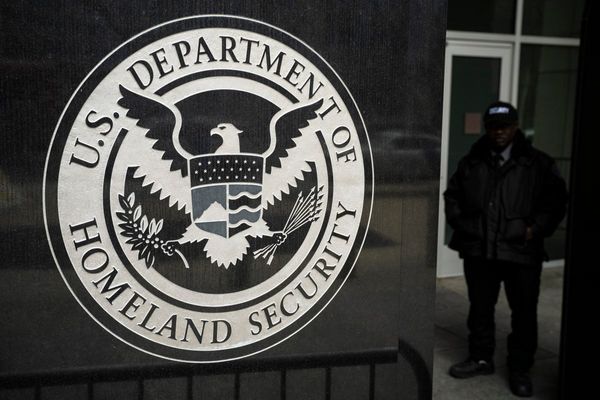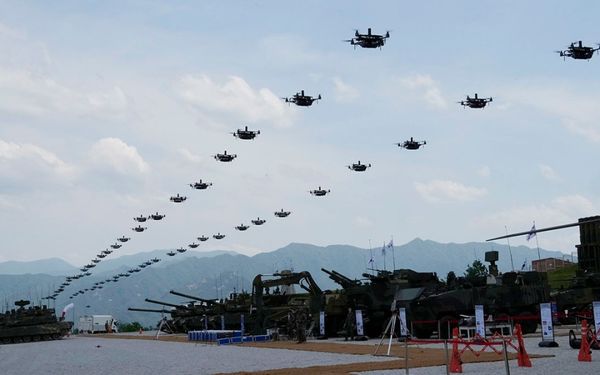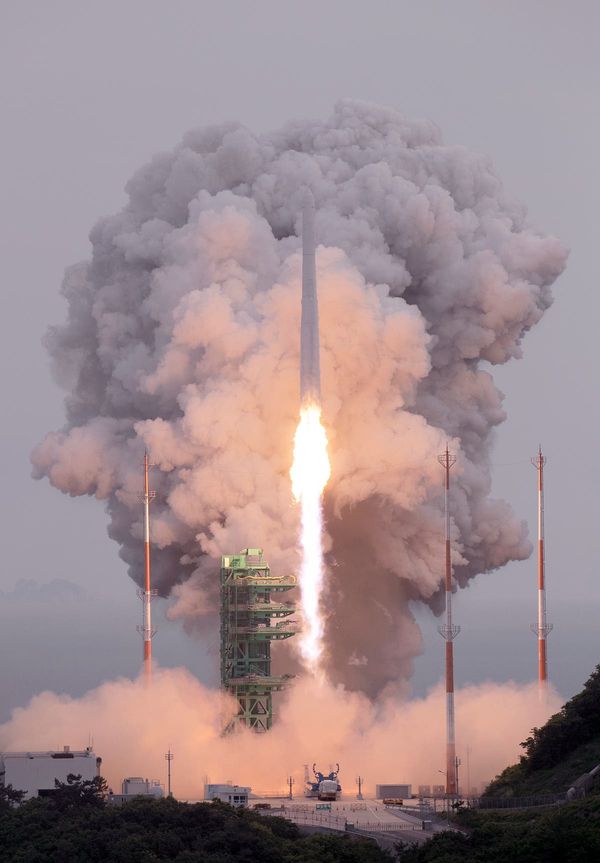
For North Koreans, the country's northern frontier long offered rare access to outside information, trade opportunities, and the best option for those seeking to flee.
But as the pandemic gripped the world in 2020, Kim Jong Un's regime embarked on a massive exercise to seal its borders with China and Russia, cutting off routes plied by smugglers and defectors.

Since then, Pyongyang has built hundreds of kilometers of new or upgraded border fences, walls and guard posts, commercial satellite imagery shows, enabling it to tighten the flow of information and goods into the country, keep foreign elements out and its people in.
(To see the satellite imagery, go to )
The project's scale is evident in the imagery analysed by Reuters and the U.S.-based Middlebury Institute of International Studies at Monterey, as well as accounts from seven defectors, activists and others familiar with activity along the border.
"The traditional North Korea-China route is now effectively over, unless there is a major change in the situation," said Kim, a South Korean pastor who has helped North Koreans defect. He and others who conduct sensitive work on the border spoke on the condition of partial or full anonymity, citing concerns for their safety and a desire to protect their networks.
Only 67 defectors made it to South Korea last year, compared with 1,047 in 2019, official data show. The figure had been declining even before the pandemic due in part to tighter restrictions in China, the preferred route for defectors.
North Korea's government and state media have said little about the construction at the border, and its embassy in London did not answer calls from Reuters. But official North Korean organs have noted increased security to keep out the coronavirus and other "alien things". In a speech declaring victory over COVID-19 last year, Kim Jong Un ordered officials to "ensure perfection" of an "overall multiple blockade wall in the border, frontline and coast areas and in the seas and air".
The sealing of the border is likely to have lasting effects, including for North Korea's nascent mercantile class and in the towns where thriving informal trade previously offered many people, particularly women, a chance to make their own way, said Benjamin Katzeff Silberstein, a non-resident fellow at the U.S.-based Stimson Center who researches North Korea's economy.
Those towns "benefited from formal and informal trade since the famine in the 1990s, but really don't have many other economic advantages," he said. "So the crackdowns are hitting two vulnerable groups, women and the population of the geographic periphery."
CHOKING A LIFELINE
Reuters and Middlebury examined Google Earth Pro satellite imagery of North Korea's northern frontier, taken at various stages between 2019 and early 2023.
Constraints such as incomplete imagery, geographical features and weather conditions meant that not all of the roughly 1,400 km border with China and 18 km border with Russia could be examined, including about 353 km for which updated imagery was not available. Images from satellite operator Maxar Technologies Inc. were used to analyse half a dozen key areas in detail.
New or expanded security infrastructure could be seen along at least 489 km of the border, including simple wire fencing, robust concrete walls, double fencing, and additional guard posts, said Middlebury research associate Dave Schmerler. He noted that other areas also showed apparent changes, but limitations in the imagery prevented conclusive determinations.
Many of the installations appeared to be around populated areas without natural obstacles such as mountains, Schmerler said. But there were also new features in flat, agricultural areas near the northeastern border along the Tumen River.
"Those areas don't necessarily have larger city or village infrastructure but lack the natural boundaries that could act as a barrier from getting into or leaving the country," Schmerler said.
Defectors, human rights activists and sources in China involved in smuggling goods or people across the border said the new security features were choking economic lifelines for vulnerable people, closing paths of escape from the authoritarian country, and further limiting North Koreans' access to outside information.
One defector who works along the border in China told Reuters that security cameras have been placed at regular intervals, and multiple layers of fencing installed, including barbed wire and electric fencing. His descriptions matched with features visible in the satellite imagery, as well as photos and video he took from the Chinese side and shared with Reuters.
Smugglers can sometimes get out of North Korea, but it is nearly impossible to get back in, leaving a number of people waiting in China, the defector said, adding that additional specialized border troops have been deployed as guards on the North Korean side.
China's foreign ministry said in a statement to Reuters that it was not aware of the situation, but that "China and North Korea have been maintaining communication and working together to maintain the security and stability of the border".
North Korea has also ordered border guards to shoot anyone trying to cross, according to official notices issued by Chinese authorities in 2020 that warned residents of the risks. Kim, the pastor, and human rights organisations have said the orders to shoot remain in effect.
The U.S. Treasury Department in December sanctioned North Korea's Border Guard General Bureau for human rights abuses, "including land mines and shoot-on-sight orders that have resulted in the deaths of numerous North Koreans".
A November report by the U.S.-based Human Rights Watch examined a 7.4 km section of the border around Hoeryong city on the Tumen River, an area that in 2019 already had substantial fencing and five watchtowers. By April 2022, authorities had built another 169 guard posts and more than 9 km of new or improved fencing along that section, it said.
"The North Korean government has been using COVID-19 as an excuse to build these new fences, guard posts and other infrastructure," said Lina Yoon, senior Korea researcher at Human Rights Watch.
EXERTING CONTROL
The new border barriers come as Kim Jong Un strengthens his grip inside the country, which is under international sanctions because of its nuclear-weapons development. Recent changes include increased national control over the "Party Life" mechanism, a form of social credit system that evaluates citizens' loyalty.
Tightening control of international trade, both official and unofficial, is a way for Pyongyang to exert influence over the military and other party members far from the border who might otherwise build power bases and pose a threat to the leadership, said J.R. Kim, a former South Korean government official who is now vice president at the Council on Diplomacy for Korean Unification in Seoul.
The early years of Kim Jong Un's rule saw the rise of a class of entrepreneurs known as donju, which loosely translates as "masters of money". Now, he seems to be trying to ensure those "petite bourgeoisie" stay in their place, J.R. Kim said.
"Controlling the border is key to this because most of these people make money through working on border smuggling," he said.
Up to 80 percent of North Koreans depend on informal markets known as jangmadang for daily necessities, according to a report released in March by Elizabeth Salmon, the United Nations independent investigator for human rights in North Korea. But these markets have had their activities sharply curtailed, she wrote, noting that the border closures have forced a vulnerable population "to the brink".
Food shortages in North Korea have worsened in recent months, due in part to the border closures, according to international experts. Kim Jong Un in February called for a transformation in agriculture and stressed the need to hit grain production targets.
Meanwhile, remittances sent by defectors to relatives in North Korea have declined since 2019, but requests for money from North Koreans have increased, suggesting that the border closures have not only made the process harder but have fueled demand for financial aid, the Database Center for North Korean Human Rights said in November, citing its annual survey of defectors in South Korea.
Sokeel Park of Liberty in North Korea, an organization that works with defectors, said the border tightening would slow down "positive changes" of recent years such as improved access to outside information, while increasing hardship.
Still, he said, there were reports of foreign shows such as the South Korean hit "Squid Game" finding their way into North Korea.
But as time goes by and the pandemic subsides, the government may find it harder to justify the restrictions, he added.
"It's all the more reason for the international community to step up efforts to support North Korean rights," he said.
(Reporting by Josh Smith in Seoul and Sudev Kiyada in Bengaluru; additional reporting by Soo-hyang Choi in Seoul and Yew Lun Tian in Beijing; editing by David Crawshaw and Anand Katakam)










